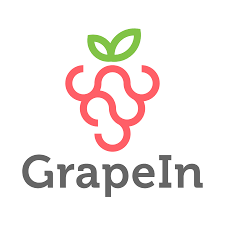The 60’s – a decade of music marked with rollercoaster moments of ingenuity and ignorance; progressiveness and draconianism; hope and fear.
As artists have done forever, many musicians in this era pushed boundaries to explore, evolve, and most certainly provoke. Perhaps most famously, Bob Dylan, the scion of folk music and already the ‘spokesman of a generation’ so early in his career, went – gasp – Electric in 1965: his first live set backed by an electric guitar-wielding rock band was immediately m et with a chorus of boos from the Newport Folk Festival crowd.
Maybe Dylan wasn’t consciously trying to stay relevant, but that’s in fact exactly what he was doing. Many now look at that polarizing moment in Newport as the beginning of his most critically-acclaimed and best received music, directly leading to the beloved albums Highway 61 Revisited and Blonde on Blonde.
The Direct to Consumer (DtC) eCommerce Push
With eCommerce, the wine & spirit industry has been trying to go Electric for at least a quarter century. But only until the pandemic has eCommerce really gained traction in the US, where DtC sales skyrocketed for obvious reasons – according to IWSR Drinks Market Analysis, online alcohol consumer sales in the US increased a mind-boggling 80% in 2019-2020.
Simultaneously, wine buyer age attrition continues, where Silicon Valley Bank’s 2021 State of the Wine Industry Report shows that Boomers and older generations are accounting for less and less of the total wine consumption in the US, while Millennials and Gen Z continue to consume more. It’s no secret that these younger generations are not only used to buying online with the simple click of a button—they expect it.
Business to Business (B2B) eCommerce is Quickly Following Suit
But it’s not only DtC that’s evolving. The B2B sales market is also trending in this direction, where distribution behemoths like Southern Glazer and RNDC have already implemented their own B2B eCommerce platforms as central tenets to their growth strategies.
Why? For one, selling to one person at a time via traditional sales reps is extremely inefficient, not to mention expensive. Typical sales reps spend over half of their time placing orders and collecting payments – time that’s better spent focusing on what they do best, like selling more. Even if one were to bury their head in the sand and continue to rely solely on sales reps, the stark reality is that the same challenges that the restaurant industry has recently faced in ramping up service staff are also affecting wine & spirits sales rep hiring.
Generation plays a role here too, where Millennials and Gen Z continue to increase their hold on wine buying positions – they already comprise 78% of the hospitality industry per the US Bureau of Labor Statistics. This number will only continue to grow with the inevitable attrition cycle.
What This Means For You As A Wine Supplier
So what does this all boil down to? Quite frankly: the wine & spirit industry has fundamentally changed and will continue to evolve. Yes, eCommerce in general is becoming more and more essential and ubiquitous, but there is still a substantial amount of room for growth in wine & spirits eCommerce.
It’s time to embrace technology as an imperative advantage in increasing your DtC and B2B buyer audiences – like Dylan, it can lead to your most successful and meaningful work yet.
For More Information
If you have additional questions about DtC and B2B eCommerce or are interested in how to drive more traffic to your wine club, contact:
Michael Tamola
GrapeIn
info@grapein.com

